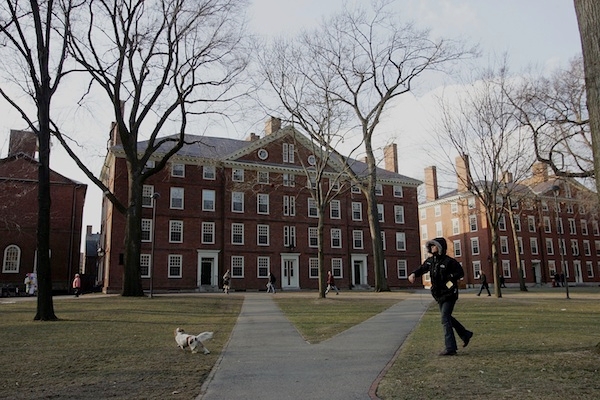With the Dow Jones scaling new heights, and other markets not far behind, investors face a dilemma. Is this a time to buy? Or, for those who have suddenly found themselves sitting on a profit for the first time in a decade, is it time to sell? This is the question that faces most investors in good times and bad, but in 2013 the anxiety seems particularly acute. Many have been burned so badly in recent years that they have given up, preferring to keep their cash in bank accounts. But in the era of negative real interest rates, even this is dangerous.
In 1981 the investment analyst Harry Browne introduced the world to his ‘Permanent Portfolio’. His idea was very simple: if you own well-distributed assets, you should always have something that performs. Mr Browne’s portfolio was broken evenly four ways between stocks, cash, gold and long-term treasury bonds. Since 1972, his portfolio has returned more than 10 per cent a year, with impressively low volatility. Over the past 15 years it has produced twice the return of the S&P500 and beaten Warren Buffett — by some margin.
A number of other smart investors have embraced the same basic approach — and foremost amongst these stand the multibillion-dollar endowment funds of Harvard and Yale universities. Over the last 16 years they have produced an average return of 13 per cent and 14 per cent respectively — even including the effect of the crash, when they lost (but soon recovered) a quarter of their value. Jack Meyer, who ran the Harvard Fund from 1990 to 2005, described his approach. ‘The most powerful tool an investor has working for him is diversification,’ he said. ‘True diversification allows you to build portfolios with higher returns for the same risk.’ You just need to own a little slice of the world.
It is nowadays fairly easy to own a wide variety of assets across the world. Depressingly few British investors do the same, possibly because so few of our Independent Financial Advisers understand the merits of this split-portfolio approach. They can be too keen on the various British products on the market. Tim Price, an award-winning wealth manager who recently appeared in these pages, has described diversification as ‘the only free lunch’ in investing.
Many of us in the West might be forgiven for having spent the last several years worrying about ‘the financial crisis’, but the extraordinary reality is that humanity has produced more wealth in the last decade than ever before, all told. As accurately as we can measure it, global economic output in the year 2000 came in at $32 trillion. Last year that number had risen to $72 trillion. To governments who borrowed too much, there has been a financial crisis — but the world, in aggregate, has never been wealthier. Once, British investors were banned by law from taking their investments overseas. Now, we can put the cash in whatever part of the world we think best.
Not that long ago, investing in ‘the world’ was very difficult, even impossible. If you wanted to buy into the success of China, India, Brazil or Singapore or own oil or gold as a private investor, you needed a large amount of money, a relationship with a private banker in somewhere like Switzerland, and a willingness to pay high fees and deal with lawyers. In the last few years, the online wealth revolution has seen these hurdles pretty much disappear. After having had accounts with no less than eight broking firms, I personally favour Hargreaves Lansdown and TD Direct. There are actually plenty of different ways to achieve roughly the same result, but to give a specific example, you might simply allocate 80 per cent of your monthly savings to a multi-asset, multi-geography fund and another 20 per cent to gold. My favourite way of doing this at the moment would be to buy one of Seven Investment Management’s AAP funds which are available to put in your ISA from both Hargreaves Lansdown and TD Direct.
Buying gold is easier than you might think. You simply buy what is called an Exchange Traded Fund (ETF). These are London-listed shares which give you exposure to any number of things: gold, silver, oil, cotton, coffee, whatever you like. You can buy them at the click of a mouse from any decent stockbroker just as if you were buying shares in Tesco or Shell. The specific gold fund I use in London can be bought through any broker, and trades under the codename PHAU.L (Physical Gold ETF) but there are many others.
So you can open a stocks-and-shares ISA and invest in a very similar way to Harvard and Yale. You can do the same with your pension, preferably in a SIPP (Self-Invested Personal Pension). You will be very lucky, however, if you find an Independent Financial Adviser who will show you how to arrange your affairs in this fashion. If you are willing to do even a moderate amount of work on understanding how global financial markets work, you can make a sizeable difference to your financial affairs — if only because you will remove the return-sapping layer of cost that results from using a financial adviser. The impact of adviser’s fees over a lifetime of investing can quite literally end up being a six- or even seven-figure sum.
Following the methodology of the likes of Harvard and Yale is relatively easy. The best part of this investment strategy is that it will enable you to forget about investment altogether — and get on with your life.






Comments